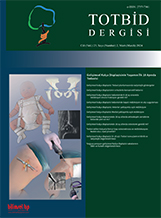
Closed or open reduction methods are usually used treatment methods for children between six months and two years of age who have a dislocated hip. Open reduction is the treatment option for closed reduction failure. In the historical development of the treatment of developmental dysplasia of the hip (DDH), before open or closed reduction methods, some surgeons preferred to apply traction for a while in order to facilitate the reduction of the hip. It has been accepted for years to be effective in reducing the incidence of femoral head avascular necrosis (AVN) and achieving successful closed reduction by applying traction before reduction. The chance of obtaining closed reduction with the traction method may be easier, but there are traction methods applied so differently that it is not possible to create a standardized algorithm. Traction is not effective to solve the problems originating from hypertrophic ligamentum teres, transverse acetabular ligament and pulvinar that develop in the pathological anatomy of DDH. However, it can contribute to reduction by gradually decreasing the tone of the iliopsoas and iliofemoral muscles. In addition, the duration of traction and whether the traction will be applied at home or in the hospital, how long and how many kilograms of weight will be applied to which patient also differ in studies. Traction-related skin problems are also a separate problem. In studies with a large number of patients and in meta-analysis studies, it has been shown that preparatory traction does not statistically significantly change the rate of successful closed reduction, the rate of need for open reduction, and the frequency of femoral head AVN, with similar results.